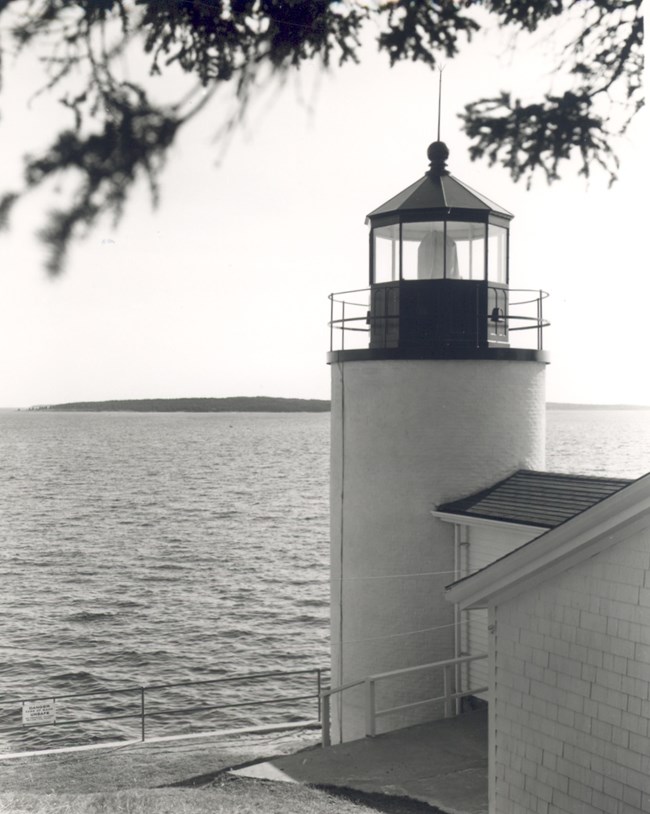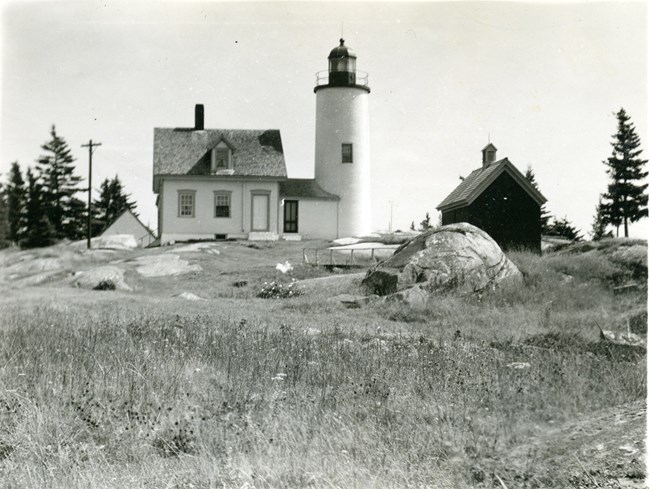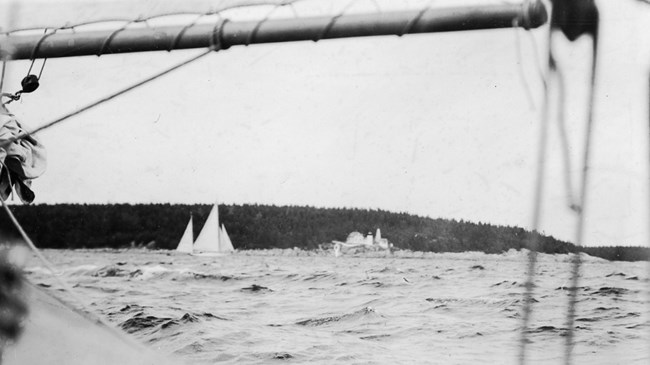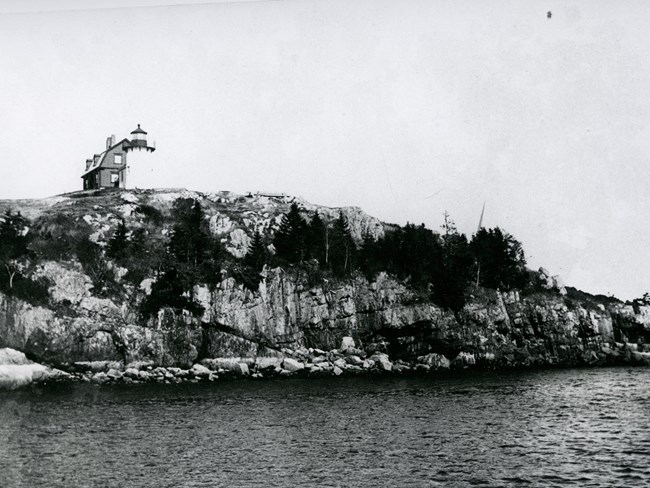
Courtesy National Park Service/Acadia National Park Lighthouses play an important role in understanding the nautical history of Mount Desert Island and the outlying islands along Maine's coast. Although lighthouses were built to serve as an aid-to-navigation (ATON), these structures have fascinated visitors for decades and taken on an additional role as iconic representations of coasts, islands, and working waterfronts. In addition to Acadia, many other national parks interpret the history of lighthouses within park boundaries. Baker Island Head Light Station, Bass Harbor Head Light Station, and Bear Island Head Light Station are currently managed by Acadia, while the U.S. Coast Guard (USCG) maintains the light itself as an ATON. These three light stations represent the connection Acadia has to the nautical history of the area. TerminologyThe term “light station” refers to all the structures associated with maintaining the light itself. Light stations usually include:

Courtesy National Park Service/Acadia National Park Baker Island Light StationBaker Island Light Station is located on Baker Island, one of five islands making up the Cranberry Isles. Baker Island is south of Mount Desert Island, but the light station is not visible from the island. There is no dock on the island, restricting access to small craft only. The 10-acre light station was acquired from the USCG by the National Park Service in 1958, except for the tower. In 2011, the tower was also acquired. The USCG continues to maintain the light as an active aid to navigation. Visitors can view the light station from water or land on guided tours, but there is no public access inside the light tower. HistoryThe U.S. Department of Treasury constructed the first light station on Baker Island (known then as Baker's Island) in 1828. The stone structures were later replaced in 1855 with a brick light tower and wood-framed keeper's dwelling. Other buildings were added over a span of nearly a century, including a brick oil house (1895), signal station (1898), fuel house (1905), and a watch tower and garage (1942). Only four structures remained by the mid-1970s and were recorded by the Historic American Buildings Survey in 1976. The light station was added to the National Register of Historic Places as part of a multiple-property nomination of 37 representative "Light Stations of Maine" in 1987 and later individually in 1988. 
Courtesy National Park Service/Acadia National Park Bass Harbor Head Light StationBass Harbor Head Light Station is in Bass Harbor, a village on the southwestern corner of Mount Desert Island. It is one of the main attractions for visitors coming to Acadia, although it was not officially managed by the park until 2020. HistoryBass Harbor Head Light Station was constructed in 1858. It was added to the National Register of Historic Places in 1988. The property was previously administered by USCG, totaling 2.5 acres with five structures. This included the lighthouse (1858), lantern (1901), keeper’s dwelling (1858), bell house (1897), oil house (1902), and barn (1905). 
Courtesy National Park Service/Acadia National Park Bear Island Light StationBear Island Light Station is located on Bear Island, one of five islands making up the Cranberry Isles. Bear Island is off the coast of Mount Desert Island, just southeast of Northeast Harbor. Only a small portion of Bear Island is managed by the park. The light station is privately leased and closed to the public. Visitors can view it from the water by boat or guided tour. HistoryOriginally authorized in 1839, the Bear Island Lighthouse is one of the 65 lighthouses along the Gulf of Maine. Standing at 31-feet tall, it rests upon a 70-foot cliff giving it a focal height of 101 feet. Bear Island is one of five Islands that make up the Cranberry Isles and its unique geologic history makes it an ideal spot for mariners to be reminded that they are traversing through jagged and treacherous waters. The construction of a light tower was originally authorized by President Martin Van Buren in 1839 as a navigation guide for mariners entering Northeast Harbor and Somes Sound. The first lighthouse was a stone keeper's house and later burned down in 1852. The lighthouse was rebuilt the following year, in 1853, exchanging stone and brick from the initial wooden foundation that contributed to its ignition. Three years later in 1856 a fifth-order Fresnel Lens was installed in the lighthouse. Following its final renovation in 1889, Bear Island Light provided safe passage for travel for almost 100 years. Automated in 1950 and de-commissioned in 1980’s, the Bear Island Lighthouse was supplemented by offshore lighted bell buoys. Friends of Acadia helped turn the light back on in 1989 and can still be seen today. The park service continues to have the support of park partners that helps the park maintain Acadia’s lighthouses. Other Nearby LightsThe following are located on Mount Desert Island or outlying islands and are not under Acadia's management:
Related Content |
Last updated: October 23, 2024
